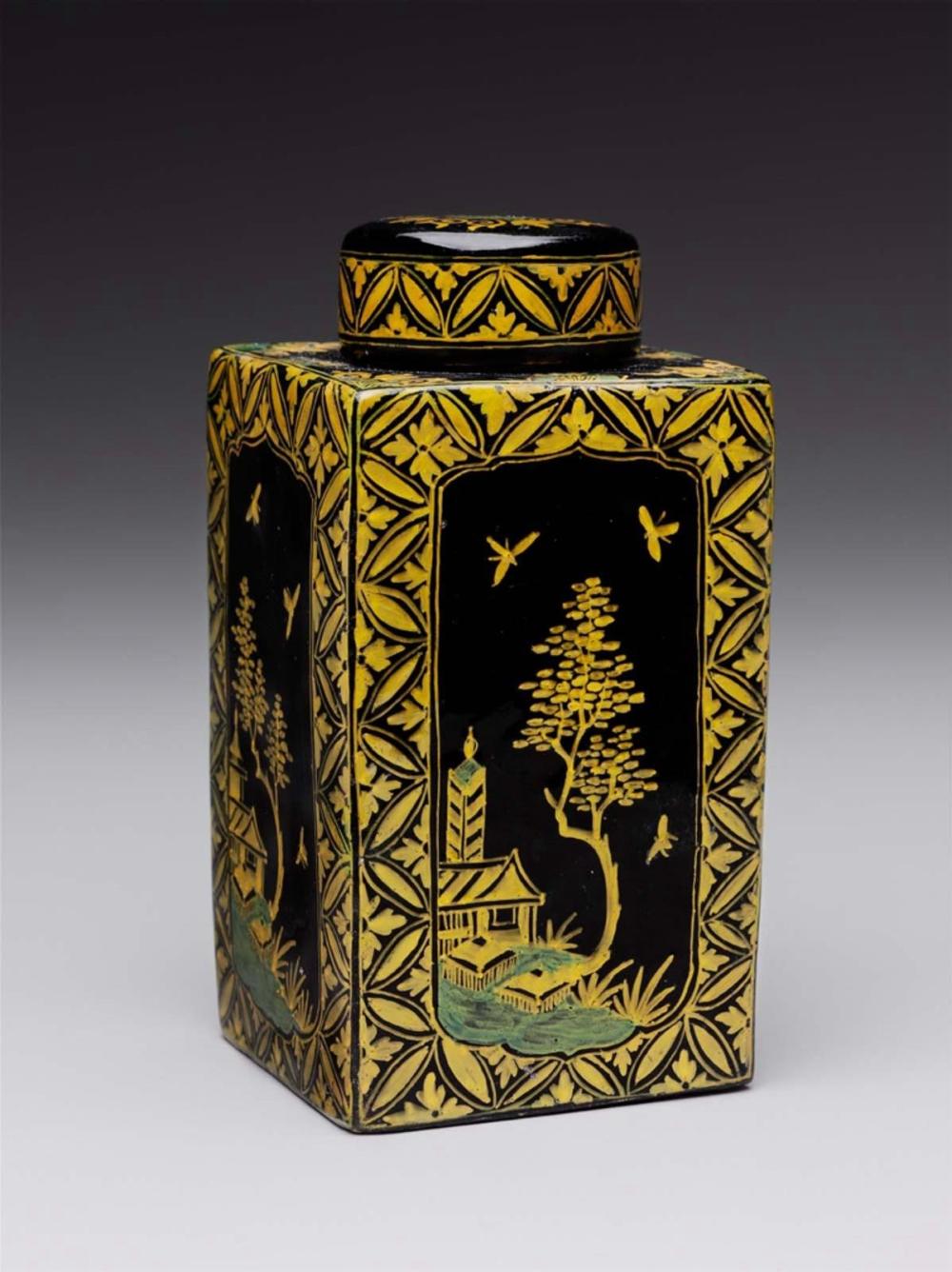Advanced Search
The black glaze on this container for storing loose tea imitates Asian lacquer as well as Chinese porcelain. Both were exotic imports prized by Europeans. Achieving a glossy black ground color on pottery was technically challenging, labor-intensive, and costly. As a result, only about sixty pieces like this one are known in the world today.
Tea canister
Probably made by: Lambertus van Eenhoorn, proprietor, De Metalen Pot Factory (Dutch, 1651–1721)
Dutch (Delft)
about 1695-1720
Medium/Technique
Tin-glazed earthenware
Dimensions
Height: 14 cm (5 1/2 in.)
Credit Line
The G. Ephis Collection—Museum purchase with funds donated anonymously, Charles Bain Hoyt Fund, John H. and Ernestine A. Payne Fund, Mary S. and Edward J. Holmes Fund, William Francis Warden Fund, Tamara Petrosian Davis Sculpture Fund, John Lowell Gardner Fund, Seth K. Sweetser Fund, H. E. Bolles Fund, and funds by exchange from the Kiyi and Edward M. Pflueger Collection-Bequest of Edward M. Pflueger and Gift of Kiyi Powers Pflueger
Accession Number2012.593a-b
CollectionsEurope
ClassificationsCeramics – Pottery – Earthenware
The black glaze on this container for storing loose tea imitates Asian lacquer as well as Chinese porcelain. Both were exotic imports prized by Europeans. Achieving a glossy black ground color on pottery was technically challenging, labor-intensive, and costly. As a result, only about sixty pieces like this one are known in the world today.
DescriptionSquare vessel with flat shoulders and fitted, threaded lid. Sides decorated with landscape vignettes containing a building, tree, and three birds in yellow on black ground. Each side framed by yellow and black border design of a floret within a diamond within a circle.
Marks
Three raised strips above one another (possiby intended as a mark?)
InscriptionsTwo labels:
"Aronson Antiquairs / Amsterdam"
"Collection G. Ephis"
"Aronson Antiquairs / Amsterdam"
"Collection G. Ephis"
ProvenanceBy 1936, Gilbert Lévy (b. 1884 – d. 1944), Paris [see note 1]; by descent within the family; December 10, 1996, Lévy collection sale, Etude Tajan, Hotel George V, Paris, lot 18, probably to Aronson Antiquairs (dealers), Amsterdam; 1999, sold by Aronson to the G. Ephis collection (private collector), France; 2012, sold by the G. Ephis collection to the MFA. (Accession Date: October 24, 2012).
NOTE: [1] Gilbert Lévy was an important porcelain collector and dealer who perished at Auschwitz. After he was deported, portions of his collection were hidden by a colleague, and were recovered after World War II by his son. Lévy’s family consigned the collection for sale in 1996.
NOTE: [1] Gilbert Lévy was an important porcelain collector and dealer who perished at Auschwitz. After he was deported, portions of his collection were hidden by a colleague, and were recovered after World War II by his son. Lévy’s family consigned the collection for sale in 1996.



